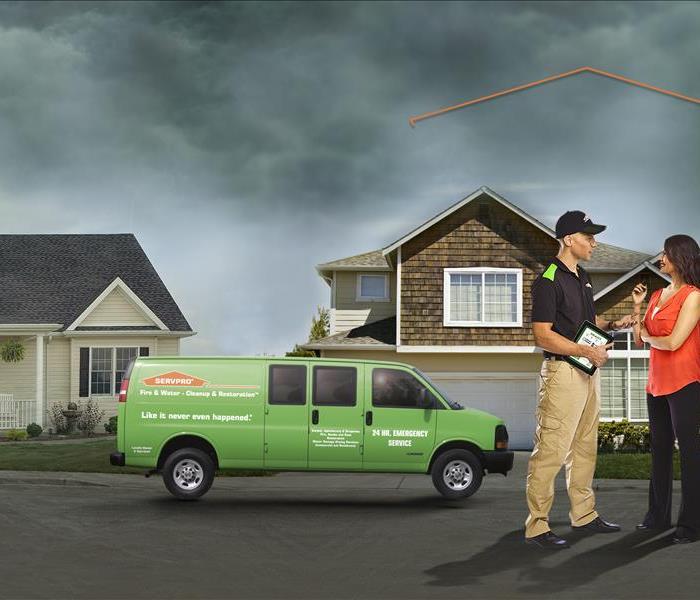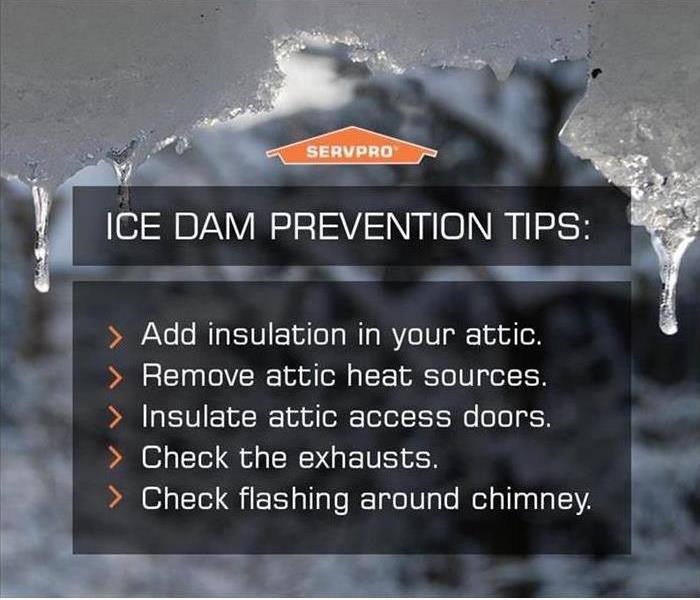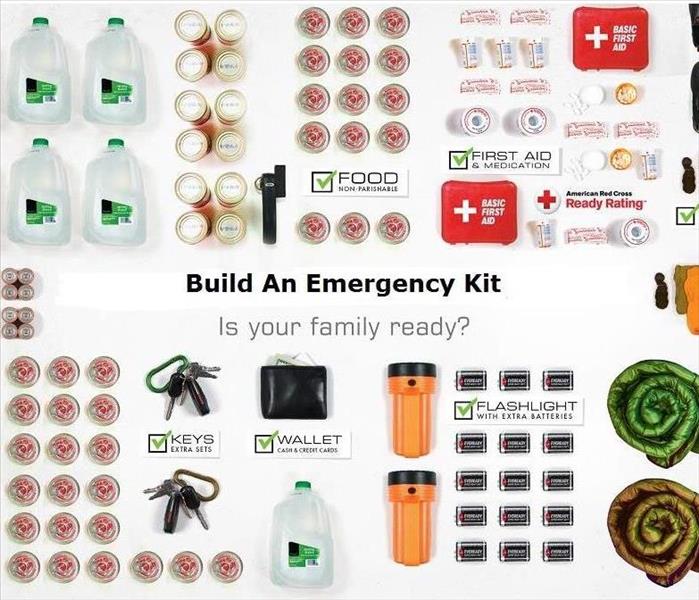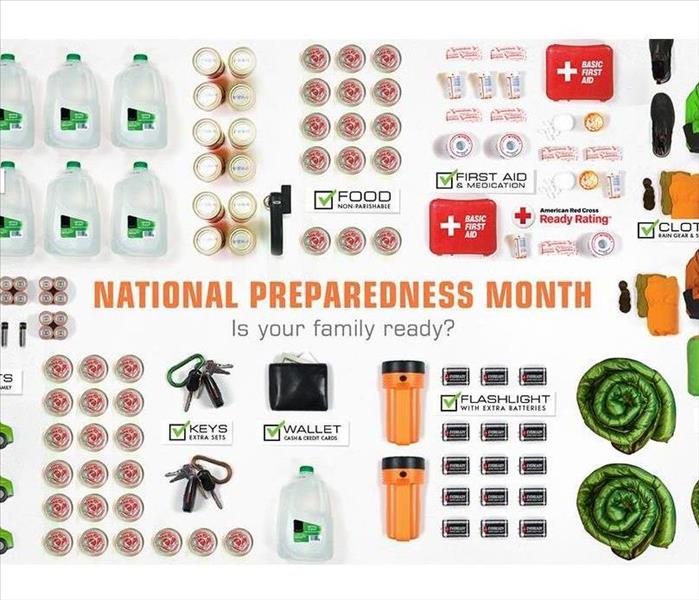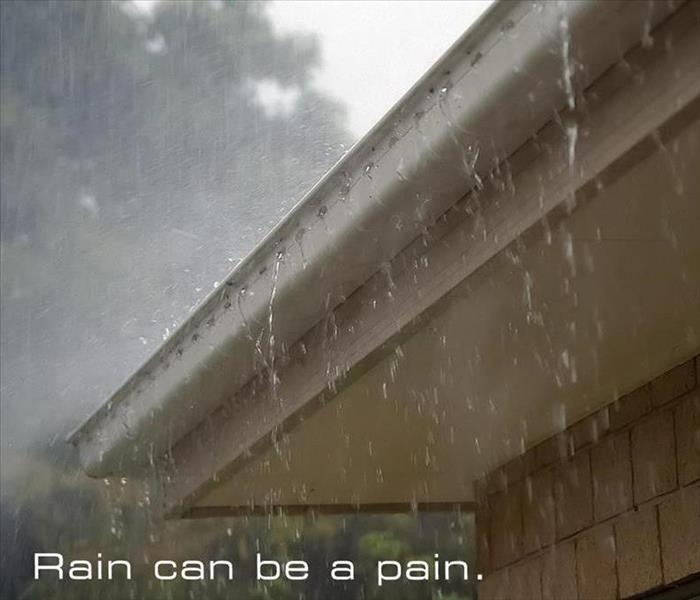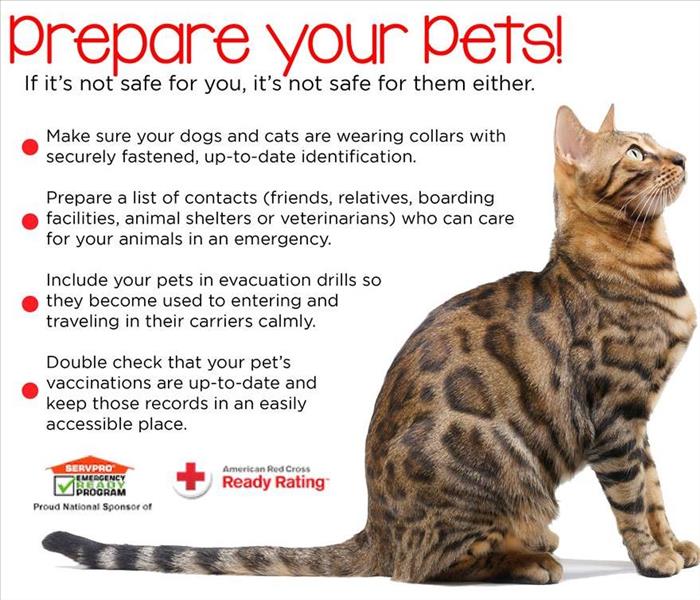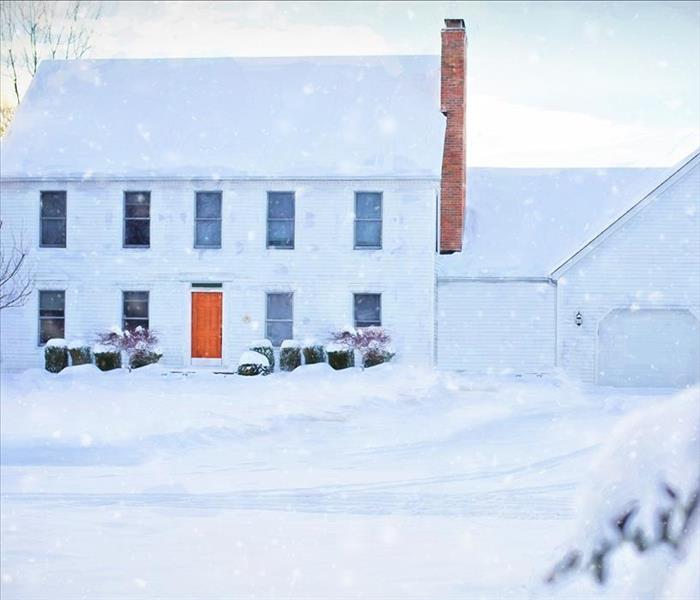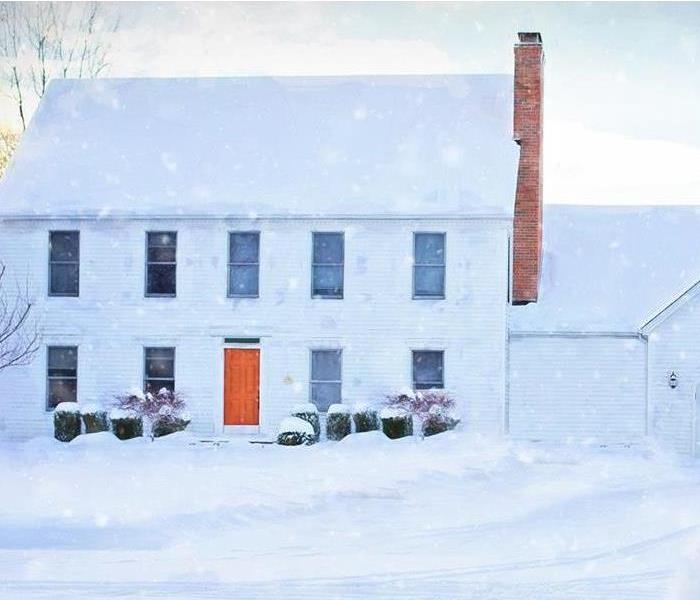Recent Storm Damage Posts
Damages Storms Can Do | SERVPRO of Eastern Rockland County Can Help
3/21/2024 (Permalink)
 When you suffer storm-related damage to your home or business, make SERVPRO of Eastern Rockland County your first call.
When you suffer storm-related damage to your home or business, make SERVPRO of Eastern Rockland County your first call.
Severe weather has a way of ruining the day sometimes. When you own a home, you have the double worry of both your family’s safety and how well your property will do.
Most modern homes can withstand some pretty strong storms; however, sometimes damages just can’t be stopped.
Seasonally, we are faced with thunderstorms, hail and lightning when it is warm, and freezing rains, snow and sleet when it is cold. No matter the kind of storm the season brings, they all create a threat for your home.
The kind of threat will depend on the type of storm moving in, the geographic location of your home and even the landscaping you have on property. The building materials used to construct your home are even a part of your risk factor when it comes to determining the ways you may experience storm damage. And sometimes how you weather a storm simply comes down to luck.
New York weather can present a few different types of risks throughout the year. In the warmer months, we can see strong thunderstorms and even an occasional tornado.
In the winter, we often experience snowstorms and freezes. We need to be prepared for not only these threats but also the possibility of high winds and flooding throughout the year. The more we are able to learn about the kinds of damage we may experience, the safer we can stay.
Wind
Wind becomes a destructive force when it reaches high speeds and pummels buildings with strong gusts. These kinds of winds always come with tornadoes and hurricanes, but even a thunderstorm can pack winds of up to 100 mph.
When wind reaches this kind of strength, it can throw debris around or knock trees over quickly. If a storm moves in with high winds, make sure you shelter in an interior room of your home. Debris can easily pierce walls or break windows when it is thrown about.
You can take the time before a storm rolls in to clean up any loose limbs or rocks in order to minimize the risk of wind damages your home may receive. Be sure to anchor down any furniture and take out any unhealthy trees as well before they can be knocked over.
Water
Water damage is one of the top forms of damage across the United States. A storm, even when it is not severe, can contain heavy rains that create ponding water that can seep through doors or window seals.
If a substantial amount of rain falls and creates saturated soil, the foundation of your home may be at risk as water begins to rise through your floor. This can even create structural damage.
To mitigate your risks of taking on water, consider using any space outside of your home to force water to roll away. Use strategic landscaping to create slopes or consider installing a rain garden. This is a curb-appealing and highly effective way to absorb moisture before it can pool up and create a problem for your home.
You should also keep your gutters cleaned out year-round in order to ensure water moves away from your house. When your gutters are dirty or clogged, water can pool on your roof, which can lead to a leak that affects your home from the top down.
Impact
Another common form of damage that can happen in just about any storm is “impact damage.” Impact damage occurs when one object hits another (or impacts it) as a result of wind or saturated soils. Fallen trees are one of the most common forms of impact damage, and impact damage can be completely destructive.
The best way to protect your home from impact damage is to keep trees trimmed or removed when they are dying or have grown too close to your home.
In 2021, weather caused over $145 billion in damages across the United States. When you take the time to prepare your home and yourself, you can save money and stress knowing that you are riding out the storm as safely as possible.
If your home is damaged during a storm, call SERVPRO of Eastern Rockland County. We are available 24⁄7 to start your restoration faster. Our professionals are your neighbors, and we want to get you back to life as it should be.
When you suffer storm-related damage to your home or business, it’s important that you know who to call! Contact us today to get your storm damage restoration started faster.
How Much Do You Know About Floods? | SERVPRO® of Eastern Rockland County
4/24/2023 (Permalink)
Did You Know?
Floods are one of the most common and widespread natural disasters in the United States. Whether you home or business is near a coastline, along a city street, in the mountains, near a river or even in a desert--there is always a potential for flood damage.
Floodsmart.gov reports, in the last 5 years, all 50 states have experienced floods or flash floods.
The 4 Most Common Causes of Natural Flooding
Heavy rainfall. Storms with excessive rainfall, or storms that sit and rest over an area for an extended period can cause flash floods or river flooding. Urban areas are more at risk for rain floods, because the higher percentage of concrete and asphalt means there’s a lack of soil to soak up all that water.
Oceanic activity. Storm surges, hurricanes and rising tides can cause water levels to rise in waves, which can invade coastal communities and wreak havoc. In September 2021, remnants of Hurricane Ida tore through New York and New Jersey. In Rockland, 85 people were rescued from submerged cars during the storm. Several roads had to be closed, and Orange and Rockland Utilities Inc. reported nearly 1,500 power outages during that time.
Dams and levees failing. The most notable example of this in recent history would be the disastrous levee breaks during 2005’s Hurricane Katrina. Levees and dams fail when cracks occur or excess pressure overtakes the dam’s ability to contain the surge of water behind it.
Snow-melts and ice dams. In areas of the country where heavy snow and prolonged freezing temperatures are common, snow and ice can build up over a winter’s time, and when they start to melt, they cause rivers of water to flow through area communities. Ice dams or ice dams happen when rivers become blocked by built-up ice being carried downstream, causing the banks to overflow.
If a flood does strike your home or business, contact the Professionals at SERVPRO, even minor floods can lead to major damage when not treated quickly and properly. Cleaning up after a disaster yourself is often an overwhelming task.
SERVPRO of Eastern Rockland County Technicians have the training and specialized equipment to dry hard to reach places such as between walls and hardwood floors. It's not only the equipment but the technology too. SERVPRO has developed DryBook, a proprietary tool that provides real-time documentation and updates on the drying process and helps ensure industry drying standards are being met.
Regardless of the cause of the flooding, SERVPRO has the tools and teams to help your home or business recover from its disastrous effects. Contact us anytime when flooding or water damage makes a mess in your life.
Winter Storms Are on Their Way Again: Here’s How to Prepare | SERVPRO® of Eastern Rockland County
3/2/2023 (Permalink)
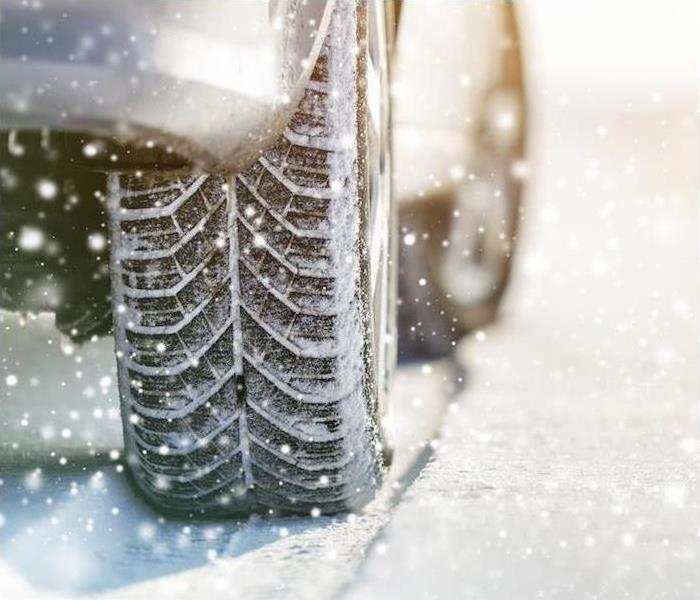 If winter weather should bring damage to your home or business, contact SERVPRO of Eastern Rockland County for fast, restorative solutions.
If winter weather should bring damage to your home or business, contact SERVPRO of Eastern Rockland County for fast, restorative solutions.
Not to steal a phrase or anything, but winter is coming. Whether you love it or dread it, cold weather is on its way back to New York again, alongside holiday parties, religious festivals, family gatherings and the prospect of a new year.
Living in Rockland County means dealing with winter’s potentially harsh and dangerous weather, so let’s run down the list of things you need to prepare as it heads your way.
Protect Your Family
Does your family know what to do in the event of an emergency? You need an emergency action plan to help everyone know what to do, where to meet and how to stay in contact during a crisis.
Take time to winterize your vehicle, whether by yourself or with the help of a mechanic. Check all major systems, as well as your battery, fluids and tires. Replace or repair anything that needs attention before you find yourself on the side of the road during a freeze, or on a slick road with bald tires.
And finally, keep your family’s emergency kits stocked up, both at home and in the car, including fresh clothes and sturdy shoes.
Protect Your Home
Frozen pipes are a serious issue in the cold clutches of winter. Avoid this source of intense water damage by letting your faucets leak during deep freezes, and insulating pipes where needed.
Check your home’s heat systems and perform any necessary repairs to avoid being left in the cold. It’s better to do a little maintenance while weather is still relatively mild than to be suddenly left without heat during an intense cold snap.
If you use any wood-burning appliances for heat or recreation, make sure furnaces and flumes are clean, and that you have proper ventilation to avoid smoke damage or inhalation.
If you notice cold air leaking indoors, check to see whether you may need to reseal your windows or add some insulation in the attic.
Protect Your Pets
Your dogs and cats aren’t made to handle cold weather, so bring them in where they can be comfortable.
Any outdoor livestock should have adequate shelter and access to non-frozen water.
Watch for Melts and Flooding
When heavy snow and thick ice melt, they can cause dangerous floods. From ice dams on your roof exploiting leaks in your roof to creeks and ponds flooding, always be careful during a seasonal thaw.
As always, stay tuned into local news outlets, and let weather apps and national agencies send you alert notifications by phone or text.
If winter weather should bring damage or flooding to your home or business, contact SERVPRO of Eastern Rockland County for fast, restorative solutions.
Stay Safe During Severe Weather by Understanding Storm Alerts | SERVPRO® of Eastern Rockland County
8/16/2022 (Permalink)
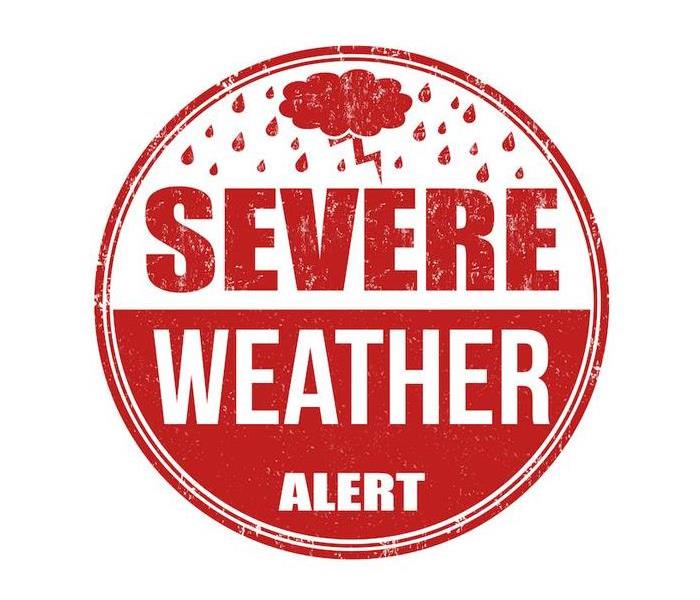 If you suspect any damage to your home from a recent storm, call SERVPRO of Eastern Rockland County.
If you suspect any damage to your home from a recent storm, call SERVPRO of Eastern Rockland County.
Different and consistently changing weather around the nation means different and consistently changing weather alerts. There are at least 42 different kinds of weather alerts from seven different categories. That is a lot to take, particularly as a storm moves in.
Understanding different warnings or advisories means being able to quickly get to safety when it is needed. It also means you can take preventive action now to protect your property and your loved ones.
A general knowledge of multiple weather systems is very helpful, but understanding the most commonly seen weather events here in New York is essential.
How Alerts Are IssuedOK, so that makes us wonder, where do weather alerts come from? Forecasts are predictions, so how is the severity, general location and duration of a storm monitored? There are quite a few items that work together to answer those questions.
The party that handles both creating forecasts and sending out weather alerts is the National Weather Service. There are six regional offices around the nation and over 100 forecasting offices. That means weather alerts are localized and accurate. The office that our weather forecasts often come from is the Eastern Region Headquarters located in Bohemia, New York.
Meteorologists and other employees at the NWS use lots of information to create a forecast, including seismic activity, solar activity, sensors and radar. The data used depends on the kind of weather approaching, but the result is the same: to share an accurate forecast.
The Most Important Alerts to UnderstandGaining knowledge of the alerts that are possible in our corner of New York is important, but it is essential to know the difference between a watch and a warning. This is language that is used in most weather events, such as thunderstorms, flooding and winter storms.
With the issuance of a watch, you should begin prepping for weather to move in that might become dangerous. However, a warning means that a severe storm has been reported and it is time to take cover right away.
Watches are put out for large general areas, while warnings are issued more precisely and often only include a county or city where danger is located.
While knowing the difference in these two types of alerts is helpful, you should also ensure that you understand the common weather that affects our upstate New York communities. Our long and cold winters bring heavy snowfall, which means that we need to understand winter storm advisories, freeze advisories and ice storm warnings.
As spring warms up and the snow begins to melt, we need to be aware of the potential for flooding. Summers bring hot weather that carry the potential for severe thunderstorms and the occasional tornado. This mixed bag of weather means we need to prepare ourselves for the multiple scenarios New York may dish out.
Protecting Your Home During a StormProtecting your home and your loved ones starts by understanding weather warnings when they are issued, but there are a few other steps you can take now to prevent damages later.
Maintaining your gutters regularly and securing or storing any outdoor furniture can help prevent flood damage and wind damage before a storm starts. Ensure you have a space in your home with basic supplies for your family to safely shelter in place during a storm, and create an exit plan for when you cannot stay.
Once the storm has moved on and it is safe to do so, check your home for damages, and make a call to SERVPRO. We have 24⁄7 availability and want to start your restoration immediately so that we can save as much of your home as possible.
Learn about the different kinds of weather that Mother Nature may hand us here in New York and protect your families and homes. Stay on top of alerts issued all around so that you are ready for the next storm to roll in.
Experienced storm damage to your home or property? Contact us today for a quick response!
Flood Damage Awareness Tips
6/2/2022 (Permalink)
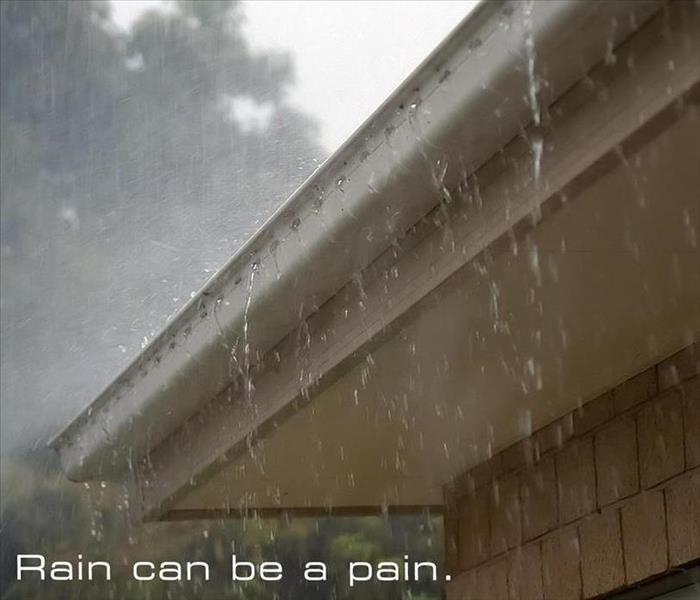 For help restoring your home after a water loss, call SERVPRO of Eastern Rockland County at 845-753-3730.
For help restoring your home after a water loss, call SERVPRO of Eastern Rockland County at 845-753-3730.
SERVPRO of Eastern Rockland County is Here To Help after your home or business in the Rockland County, New York area suffers any water damage from flooding waters. We have commercial grade equipment, highly trained technicians and cleaning products specially formulated to clean any disaster. Here are some safety tips for you to follow to stay safe and prevent major water damage if possible.
10 Actions to Take Before the Flood
- Learn the safest route from your home; or business should you have to leave in a hurry
- Develop and practice a "family escape" plan and identify a meeting place if family members become separated.
- Make an itemized list of all valuables including furnishings, clothing and other personal property. (Keep the list in a safe place-not in your home)
- Stockpile emergency supplies of food, medicine, first aid supplies, and drinking water. Store drinking water in clean closed containers.
- Don't forget to plan for your pets.
- Keep a portable radio, emergency cooking equipment, flashlights in working order, and extra batteries.
- Keep your automobile fueled. If electric power is cut off, service stations may not be able to pump fuel for several days.
- Find how many feet your property is above or below flood levels.
- Keep materials like sandbags, plywood, plastic sheeting and lumber handy for emergency weatherproofing.
- If flooding is likely and there is time, move essential items and furniture to upper floors in the house. Disconnect electrical appliances that can't be moved....Never touch appliances if you are wet or there is standing water.
And don't forget to monitor NOAA Weather Radio, and TV Emergency Broadcast Stations. Visit ready.gov to learn more. To learn more about water damage https://www.SERVPROeasternrocklandcounty.com/water-damage-restoration
New York’s Weather Hazards as Spring Approaches | SERVPRO® of Eastern Rockland County
3/8/2022 (Permalink)
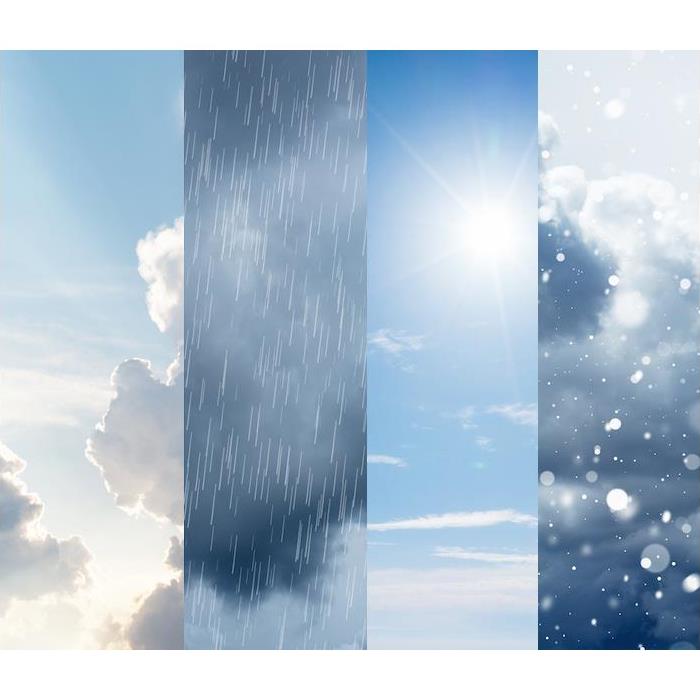 Extreme temperature changes can lead tosevere weather. SERVPRO of Eastern Rockland County is a click away if you experience any damage.
Extreme temperature changes can lead tosevere weather. SERVPRO of Eastern Rockland County is a click away if you experience any damage.
Being so large and diverse, seasonal weather is not one-size-fits-all here. Throughout the year, various sections of the nation encounter different weather patterns and consequently face differing degrees of weather threats.
Winters in the Northeast are the longest (as you’re surely aware), with frigid weather lasting throughout the season. New York has also seen an increase in rainfall from hurricanes and tropical storms, resulting in severe flooding and water damage. Extreme cold and the threat of snowstorms and blizzards may be expected until late spring, when temperatures begin to rise again.
Preparing for a Flood
Make a plan for your household, including your pets, so that you and your family know what to do, where to go, and what you will need to protect yourselves from flooding. Learn and practice evacuation routes, shelter plans, and flash flood response. Gather supplies, including non-perishable foods, cleaning supplies, and water for several days, in case you must leave immediately or if services are cut off in your area.
In Case of Emergency
Keep important documents in a waterproof container. Create password-protected digital copies. Protect your property. Move valuables to higher levels. Clear debris from drains and gutters. Install check valves. Consider a sump pump with a battery.
Extreme weather poses a considerable danger to anyone in the United States, regardless of where you live. Yours may differ from your friend’s a few states away, but knowing how to prepare is always a good idea.
If extreme weather leaves you with damage from water, fire or other elements, help is a click away. Contact SERVPRO for fast, expert recovery.
Is Your Nanuet, Rockland County New York Home READY For Winter Weather?
2/18/2022 (Permalink)
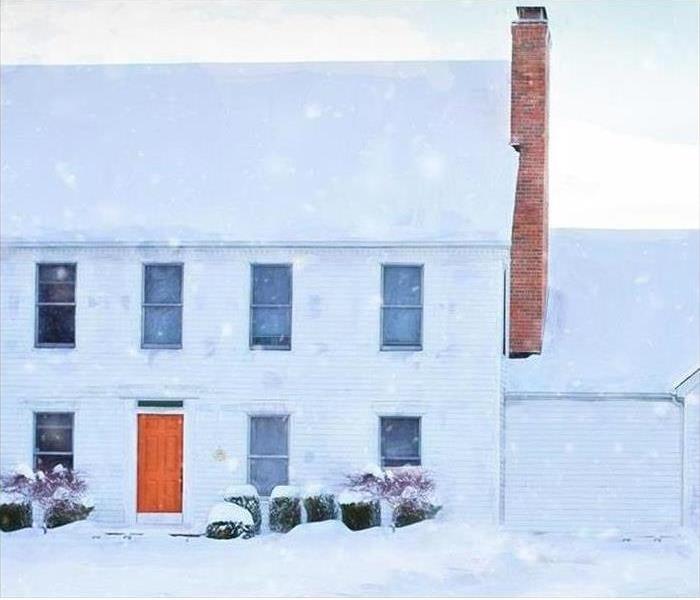 Call SERVPRO of Eastern Rockland County to handle any size water, storm or fire disaster at your home.
Call SERVPRO of Eastern Rockland County to handle any size water, storm or fire disaster at your home.
With temps getting colder, here are some tips to avoid frozen pipes:
On The Inside:
- If you will be away from home for days at a time, make sure that all of your pipes are kept warm, especially in spaces that receive little or no heat.
- If any pipes will stay exposed to freezing temperatures, open up one faucet with a very small drip to keep water moving through the pipes.
On The Outside:
Protect your pipes as you would protect your plants.
- Cover up your outside faucets with foam or towels to insulate them. Especially if you plan to be away from home this winter, remember to leave your contact information with a neighbor.
- You might consider giving them a key to your home, too, and leaving your preferred plumber's contact information behind should an emergency occur.
- If your pipes burst and your home has water damage call SERVPRO of Eastern Rockland County at 1(845)753-3730.
Be Prepared for Summer Storms | SERVPRO® of Eastern Rockland County
8/20/2021 (Permalink)
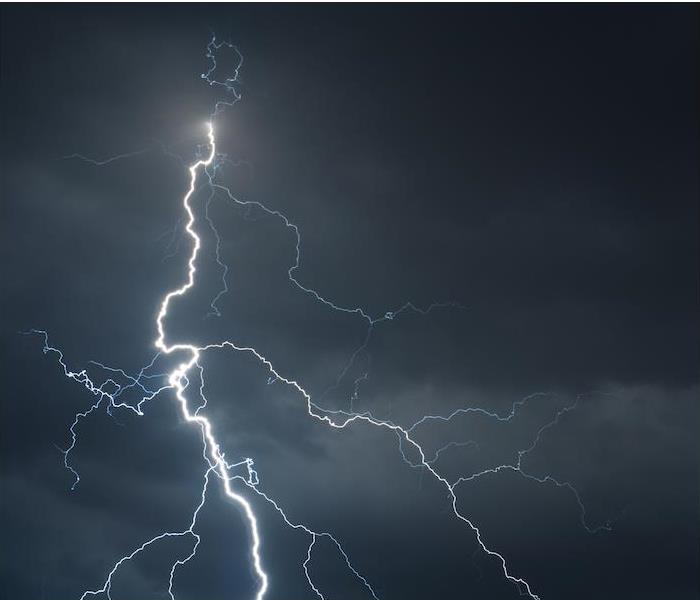 If storms cause damage to your home or business, SERVPRO of Eastern Rockland County is on the line, ready to make things right.
If storms cause damage to your home or business, SERVPRO of Eastern Rockland County is on the line, ready to make things right.
Summertime is here in all its glory, and for many it means making great memories outdoors, playing sports or taking trips to the coast. But does it ever seem like while it’s the sunniest time of the year, it’s also the most likely time for you to get caught out in a random thunderstorm that makes you have to retreat?
There’s a reason for that.
While summer (particularly August) in Rockland County has the highest percentage of sunshine of any time of the year, the warm summer air combines with moisture to create an environment more likely to produce thunderstorms.
Be Storm-Alert
While we often don’t worry much about plain old thunderstorms because we see them so often, we should never write them off as harmless. You should pay careful attention to local weather alerts and forecasts, and consider postponing outdoor activities.
Procuring a battery-powered NOAA Weather radio will help you remain informed even in a power outage.
Flooding can happen quickly in thunderstorms, especially in areas where drainage is lacking, and if a flood alert is issued you’d do well to cancel any travel plans until you know it’s safe. And check the backyard for items that might get blown over or away by heavy storm winds—see if you can tie them down or store them out of harm’s way until the storm passes.
Storm readiness isn’t something we get excited about, but it can’t be neglected—there are dozens of storm-caused deaths each year, and many of them are preventable.
Be Storm-Safe
Staying indoors can keep you safe from the highest probability of lightning strikes. And the fact that it may stop raining doesn’t necessarily mean the outdoors are safe again: You should wait until you’ve heard no thunder for 30 minutes to return outside. This means the storm is far enough away that lightning isn’t a danger.
While indoors during a storm, windows and showers should be avoided. Windows can break if lightning strikes the house (or if debris is flying in heavy winds), and showers and water conduct electricity well enough to make them dangerous.
Keep an emergency kit ready for extreme situations like hurricanes or tornadoes—they can be lifesavers if you have to evacuate or spend extended time without power.
Stay on high ground or in the highest floor during flooding, and don’t touch flood water as it may contain contaminants or harmful chemicals. If you encounter flooded roads, turn around. Flood water can hide a completely washed away road, and it can carry your car away into danger as well.
There are any number of dangers that can come into play in a thunderstorm, and it’s always best to be cautious and put things on hold until storms safely pass.
If storms cause damage to your home or business, SERVPRO is on the line, ready to make things right again.
The Rising Tide of Severe Storms | SERVPRO® of Eastern Rockland County
7/8/2021 (Permalink)
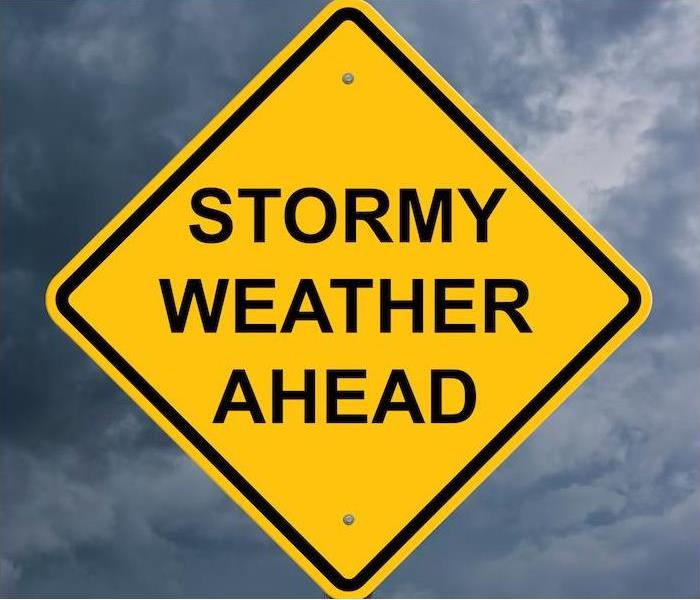 When storms do damage, we go to work to make things right. Contact SERVPRO of Eastern Rockland County to start the restoration process.
When storms do damage, we go to work to make things right. Contact SERVPRO of Eastern Rockland County to start the restoration process.
The year 2020 happened to be a record-setting year for bad weather. 2020 saw more weather disasters than any previous year on record, and we certainly felt the sting of it here in Rockland County.
For a weather event to be classified as a disaster, it must cause a billion dollars in damages. 2020 saw 22 such events, plus a number of other damaging storms that didn’t reach that financial benchmark.
There were so many events that the NWS had to resort to using Greek letters to name them all.
Not Just Hurricanes
Hurricanes and tropical storms (such as Isaias, which knocked out power for 2.5 million in our local region) often bear the brunt of blame for causing destruction and financial damage, but in fact the most expensive disasters of 2020 in the contiguous United States were thunderstorms and tornadoes. Of the 22 major disasters in 2020, 14 of them were thunderstorms and storm systems.
This scenario shows the potential damage of a single storm: In August 2020, what started as a normal-looking line of storms in Nebraska churned into a devastating derecho (think of a tornado, but instead of rotating winds imagine slashing, straight-line blasts) which damaged over 10 million acres of Nebraskan corn fields. That’s almost half the crop of the corn-dependent state, and over 11% of the corn crop of the entire country.
Storms are a potential problem for everyone, and as a home or business owner, you should take all the necessary precautions to protect your property and anyone in it from dangerous storms. But should those precautions prove insufficient or ineffective in an unexpected weather disaster, remember that you’ve got a friend in the restoration industry.
When storms do damage, we go to work to make things right. Contact SERVPRO today to see how we can help.
A Look at What Dangers Thunderstorms Can Cause | SERVPRO® of Eastern Rockland County
5/11/2021 (Permalink)
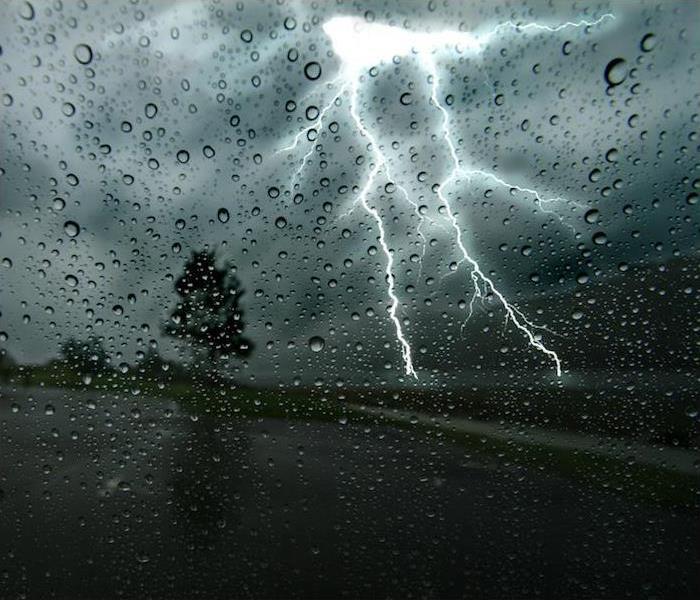 Thunderstorms can pop up at any moment. Contact SERVPRO of Eastern Rockland County if you experience any damage.
Thunderstorms can pop up at any moment. Contact SERVPRO of Eastern Rockland County if you experience any damage.
The warmth of the spring and summer is a welcome change from the chill of winter, but this warm weather also means that thunderstorms are given ample opportunity to develop.
Thunderstorms become a regular occurrence when it is hot outside, which means that many people do not take them seriously when they become a possibility. Every thunderstorm has the potential to cause serious harm to those in its path and should be regarded with caution.
All thunderstorms contain thunder and lightning every time, in addition to heavy rain and wind. If a thunderstorm is classified as severe by weather authorities, that means hail is over an inch in diameter and winds are reaching speeds of 58 miles per hour. All of these conditions can cause serious injury and property harm to those impacted by the storm.
How Thunderstorms Can Be So Destructive
Damage and injury from lightning strikes. If there is thunder, lightning will always be present too—in fact, thunderclaps are actually caused by lightning strikes. Over 300 injuries annually are attributed to lightning strikes, in addition to the major property damage lightning can cause due to fires and falling trees.
Property damage due to hail. Hail is not present during every thunderstorm, but it is always possible and can be quite dangerous. Hail falls faster the larger it is, and can lead to injury, car dents and household damage. If hail impacts a home’s roof or siding, it can provide a way for water to work into the home and cause major water damage if left untreated over time.
Harm from flash flooding. Flash flooding is an extremely dangerous force because of how suddenly it can come about and the fact that it can occur nearly anywhere. During periods of heavy rain, storm drains can become overwhelmed and begin to overflow, causing flash flooding conditions that can be deadly. Just a few inches of water can knock an adult off their feet or move a car, so never come into contact with floodwater if it can be avoided.
Thunderstorms are dangerous and can cause significant damage to homes or commercial spaces. If you have damage due to a thunderstorm, you can count on us to help. Contact us 24⁄7 for more information about our storm restoration practices.
Winter Weather Worries: Ice Dams and Frozen Pipes
3/2/2021 (Permalink)
Winter weather and temperatures falling below freezing in Rockland County, New York can bring about home water damage issues such as frozen pipes and ice dams. These damages are costly to repair and in most instances can be prevented. Frozen Pipes
Frozen pipes are not only those exposed to the cold weather, such as outdoor pipes, but also pipes in cold areas like basements, attics, garages and kitchen cabinets. A frozen pipe can burst at the point where the ice blockage inside the pipe is located, but the rupture is caused by the backflow pressure between the water source and the blockage. A burst pipe can cause considerable damage to your home if not properly and quickly fixed.
According to The American Red Cross here are some tips to prevent pipes from freezing:
- Drain water completely from swimming pool, sprinkler system and outside hoses.
- Open kitchen cabinets to let warm air near plumbing.
- In extreme cold, let water drip from faucets that may come from exposed pipes.
- Keep your heat set at the same temperature day and night. The temperature should not be set below 55°f
Ice Dams
Ice dams can cause major damage during the snowy season. They form when heated air melts roof snow downward into water dammed behind still frozen ice. When the trapped water cannot run into the gutter system, it can backflow under the roof's shingles and into the structure's interior areas, as well as causing gutters and shingles to move or fall. Icicles can be an initial sign of an ice dam, (source Travelers.com) check for water stains or moisture in your attic or along ceiling of exterior walls in your home. These are indicators that ice dams have occurred and water has penetrated the roof membrane. Remove the ice dam quickly to prevent major water damage to your homes exterior and interior. Using heated cables, a roof shovel, or calcium chloride ice melt can be used to alleviate the ice dam problem.
If winter weather causes water damage to your property, SERVPRO of Eastern Rockland County has highly trained professional technicians ready to restore your property.
Build an Emergency Kit
3/19/2019 (Permalink)
Be Prepared at your home or business with an Emergency Kit. https://www.ready.gov/ suggests you have enough supplies to last for at least three days. Below are some suggested items to include in your kit.
- 3-day Supply of non-perishable food
- Water-One gallon per person per day
- First-aid kit
- Prescription Medication
- Sleeping bags and blankets
- Fire Extinguisher
- Hygiene products
- Flashlights
- Extra Batteries
- Cell phone charger
- Change of clothes
- Matches in weatherproof container
- Wrench or pliers to turn off utilities
- Whistle to signal for help
- Pet supplies
- Infant supplies
- Important documents in weatherproof container (insurance documents, bank records, IDs)
You can also keep a condensed Emergency Kit in your vehicle as well. For a more extensive kit go to ready.gov/
Be Prepared: Build a Kit
10/16/2018 (Permalink)
In our area we don't get hurricanes often, however we can get severe storms and being prepared is still important. One of the best ways to prepare for bad weather and emergencies is to have an emergency kit ready. Don't forget to check the kit every month to make sure items are still working or in code.
Build An Emergency Supply Kit:
- Water-1 gallon per person per day
- Food-non-perishable 3-day supply
- Manual can opener
- Battery operated radio, preferably a NOAA Weather Radio
- Flashlight and extra batteries
- First Aid Kit
- Whistle to signal for help
- Clothing
- Dust mask or bandana
- Plastic sheeting, garbage bags and duct tape
- Wrench/pliers
- Hygiene items
- Cash
- Fire extinguisher
For more information on building a kit visit https://www.ready.gov/build-a-kit
Preparing For A Flood: Be Flood Smart
10/11/2018 (Permalink)
Flooding can happen fast. Just because you haven't experienced a flood doesn't mean you won't in the future. In fact, 20% of all claims paid by the National Flood Insurance Program (NFIP) were for policies in low-risk communities.
The American Red Cross recommends having the following list of items packed and ready to go in the event of an emergency or evacuation due to flooding.
- Water-3+ day supply; one gallon per day per person
- Food-3+day supply of non-perishable, easy to prepare food
- Flashlight
- Battery-powered or hand crank radio (NOAA Weather Radio, if possible)
- Extra batteries (all sizes)
- First Aid Kit
- Medications (7 day supply) and medical items (hearing aids, glasses, contacts, syringes, canes)
- Multi-purpose tool, supplies to secure your home
- Personal hygiene items
- Copies of personal documents (medication lists, deed/lease to home, insurance policies, birth certificates)
- Cell phone with chargers
- Family and emergency contact information
- Extra cash
- Blanket
- Baby supplies, pet supplies
- Maps
- Extra car and house keys
- Extra clothing for both warm, cold and rainy weather-sturdy footwear
- Insect repellent and sunscreen
- Camera for photos of damage
Preparedness For Pets Before, During and After Storms
10/11/2018 (Permalink)
Have you accounted for your four legged best friend when emergency planning?
Pets are just as important as any family member to most people, so why would you not make them a part of your preparedness planning? There are several things you can do to make sure they stay safe as well during an emergency.
Pet Emergency kit: https://www.ready.gov/animals is a great resource for a list of essentials needed in your Pet Emergency kit.
Food: At least a three day supply in an airtight, waterproof container.
Water: At least three days of water specially for your pets.
Medicines and medical records.
Important Documents: Registration information, adoption papers, and vaccination documents. Talk to your Veterinarian about micro-chipping and enrolling your pet in a recovery database.
First Aid Kit: Cotton bandage rolls, bandage tape, scissors, antibiotic ointment. Flea and Tick prevention, latex gloves, saline solution, isopropyl alcohol. Include a Pet Fist Aid reference book.
Collar or harness with ID tags, rabies tag and a leash.
Crate or pet carrier: Have a sturdy, safe crate or carrier in case you need to evacuate. The carrier should be large enough for your pet to stand, turn around and lie down.
Sanitation: Pet litter and litter box if needed. Newspaper, paper towels, plastic trash bags and chlorine bleach.
A picture of you and your pet together. If you become separated, a picture of you and your pet together will help document ownership and allow others to assist you. Add species, breed, age, sex color and distinguishing characteristics.
Familiar items: Treats, toys and bedding can help reduce stress.
Evacuations: While practicing fire escape or evacuation plans, be sure to include pets. If evacuation happens, don't leave pets behind as they can be lost or injured.
Be sure to take four-legged friends into consideration when planning for emergencies.
source: Restoration Newsline Vol. 29 Issue 10
Is Your Property Ready for Winter?
1/2/2018 (Permalink)
Cold weather can have a huge impact on your home or business if you are not properly prepared. Whether it is heavy rain, freezing temperatures, damaging winds, sleet or snow, all can cause serious damage. While you cannot control weather, you can take steps to be prepared, and help take the sting out of winter weather.
- Check your property for downed tree limbs and branches.
- Roofs, water pipes, and gutters should all be inspected to ensure they are in proper working order. Obstructions can lead to roof damage and interior water problems.
- Inspect property for proper drainage to alleviate flood hazard potential.
- Protect water pipes from freezing by simply allowing water to drip when temperatures dip below freezing. If pipes are under cabinets, leave the doors open allowing warm air inside. If you have outdoor faucets, turn off the water at the main valve.
- Ask SERVPRO about completing an Emergency READY Profile for your business. The ERP is a no cost assessment of your facility, and provides you with a plan to get back in business fast following a disaster.
Are You Winter READY!
11/30/2017 (Permalink)
Cold weather and winter storms can have a huge impact on your home or business if you are not properly prepared. Whether it is heavy rains and wind, freezing temperatures, sleet or snow, all can cause serious and costly property damage. Take steps to be prepared and help take the sting out of the winter blues.
- After winter storms check your property for downed tree limbs and branches. Downed limbs can cause damage to your property and lead to possible water damage issues.
- Roofs, water pipes and gutters should all be inspected to ensure they are in proper order. Gutters should be clear of debris and directed away from buildings. Leaves and other obstructions can cause a damming effect, which can lead to roof damage and interior water problems.
- Inspect property for proper drainage to alleviate flood hazard potential.
- Inspect all handrails, stairs, and entryways to address and correct potential slippery or hazardous areas. Install mats or non-slip surfaces and post cautions signs.
- Protect water pipes from freezing by simply allowing water to drip when temps fall below freezing. If pipes are under cabinets, leave the cabinet doors open.
- Consider turning outdoor faucets off at the main valve. Once shut remember to drain the outdoor faucet.
When winter weather strikes and causes a disaster, call SERVPRO to strike back!
Is Your Property Winter Ready?
12/5/2016 (Permalink)
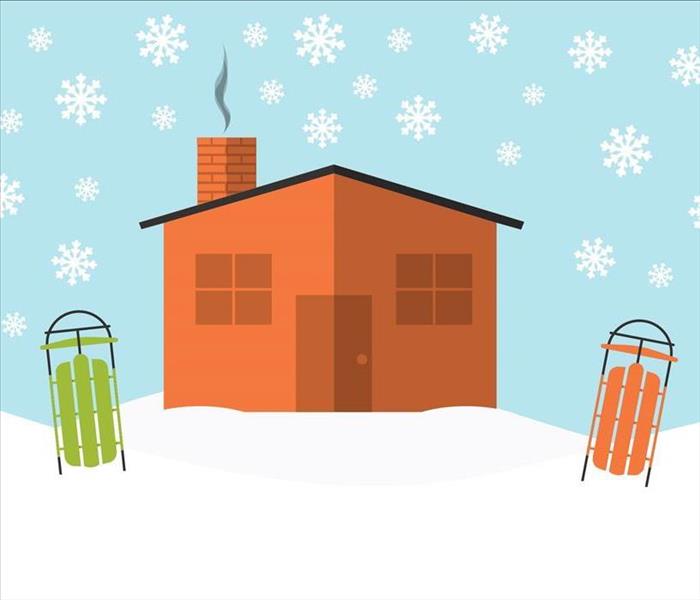 Fire Cleanup, Water Restoration, Mold Remediation
Fire Cleanup, Water Restoration, Mold Remediation
Cold weather can have a huge impact on your home or business if you are not properly prepared. Whether it is heavy rains, freezing temperatures, sleet or snow, all can cause serious and costly property damage. Take steps to be prepared and help take the sting out of the winter blues.
- After winter storms check your property for downed tree limbs.
- Roofs, water pipes and gutters should all be inspected to ensure they are in proper order. Gutters should be clear of debris and directed away from buildings.
- Inspect property for proper drainage to alleviate flood hazard potential.
- Inspect all handrails, stairs, and entryways to address and correct potential slippery or hazardous areas. Install mats or non-slip surfaces and post cautions signs.
- Protect water pipes from freezing by simply allowing water to drip when temps fall below freezing. If pipes are under cabinets, leave the cabinet doors open.
- Consider turning outdoor faucets off at the main valve. Once shut remember to drain the outdoor faucet.
When winter weather strikes and causes a disaster, call
SERVPRO to strike back!
Rainy Weather has Passed, but the after effects may still be a problem
5/3/2016 (Permalink)
 Storm, Water Damage, Mold Remediation
Storm, Water Damage, Mold Remediation
Although we often need rain to offset the drought in the area. Your home doesn't need the water or damp weather inside.
Mold and Your Home
Mold is found both indoors and outdoors. Mold can enter your home through open doorways, windows, vents, and heating and air conditioning systems. Mold in the air outside can also attach itself to clothing, shoes, bags, and pets can and be carried indoors.
Mold will grow in places with a lot of moisture, such as around leaks in roofs, windows, or pipes, or where there has been flooding. Mold grows well on paper products, cardboard, ceiling tiles, and wood products. Mold can also grow in dust, paints, wallpaper, insulation, drywall, carpet, fabric, and upholstery.
Inside your home you can control mold growth by:
- Controlling humidity levels;
- Promptly fixing leaky roofs, windows, and pipes;
- Thoroughly cleaning and drying after flooding;
- Ventilating shower, laundry, and cooking areas.
If mold is growing in your home, you need to clean up the mold and fix the moisture problem.The best practice is to remove the mold and work to prevent future growth.
SERVPRO handles water damages every day and know prompt action is required to prevent mold growth.
 When you suffer storm-related damage to your home or business, make SERVPRO of Eastern Rockland County your first call.
When you suffer storm-related damage to your home or business, make SERVPRO of Eastern Rockland County your first call.




 24/7 Emergency Service
24/7 Emergency Service
